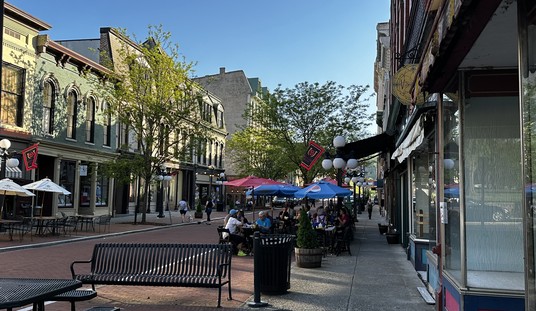
The How to be a Retronaut photo blog has a good healthy massively illustrated scoop of the Savoy Hotel Cocktail Book of 1933. Even so, only about half of the 200 or so pages are there, unfortunately. Perhaps the biggest causality is in the M section, which ends just before the Savoy listed their formula for the most famous cocktail in history. That’s a particularly unfortunate gap, considering how much the recipe for the cocktail has changed over the decades. Still though, there’s a pretty nifty gin-based cocktail recipe in there, which we’ll get to in just a moment.
The year of the Savoy book is one of the most important in the 20th century. It certainly wasn’t a good period for those who believed in freedom: a ruthless dictator had seized Germany that year; Italy was already under the fascist yoke, and the Soviet “experiment” was still going strong. In the States, a more benign but still authoritarian by American standards president had just taken office. Prohibition, the ending of which had propelled FDR to power wasn’t an issue in London, but with the economy bottomed out, people had good reason to drink. (See also: today.)
That being said, the menu itself, given the culture that produced it, is a wonderful relic from a more civilized era, to paraphrase a venerated English actor in his best-known role. Back in the 1990s, a more cutting-edge cocktail menu appeared — one of the hippest Websites in the late-1990s was the Wired Cocktail site, edited by Paul Harrington. I’d love to know the story of how Wired magazine came to host this site, which ended a few years after Harrington’s exceptional book on the topic was published in 1998. (In mint condition, that book now goes for crazy money at Amazon; I was fortunate to buy it when it was first published, having been a rabid fan of the Website that inspired it.)
One of the best cocktails in the Savoy book is named after the symbol of technological progress of the era: The Aviation Cocktail. While only a few bars still make it today, there’s nothing stopping you; in fact its key ingredient, Maraschino liqueur is apparently more readily found today than when Paul Harrington described the cocktail at the old Wired Website:
The Aviation is the prince of classic cocktails. Still served at the Rainbow Room in Rockefeller Center (where the staff will lend you a clownish jacket if you forget to dress up) the Aviation has no modern equivalent and can only be obtained at bars where the lost art of mixology is pursued with zeal, if not fanaticism.
The rareness of a good Aviation can be linked to the disappearance of maraschino, which is fundamental to the drink. Once a fairly common spirit, maraschino is a clear cherry liqueur that is sweet, but not too sweet. It has nothing at all in common with the red chemical syrup in jars of cherry garnishes, though if you order an Aviation in a common bar, and mention the word maraschino as you recite the recipe, be prepared for some sickly consequences.
At old, fancy hotel bars you might spy a bottle of maraschino that has survived unconsumed from an earlier era. If so, and if you have some skill at making friends with bartenders (tips help), you can give this approach a try:
“Got fresh lemons?”
“Uh, sure.”
“If you squeeze one of those lemons and shake it over ice with a shot of gin and splash of that liquor in the green bottle there, it will make one hell of a cocktail. You game?”
It’s worked a few times, and it’s failed a few times. The strict recipe is an ounce and a half of gin, a quarter ounce of maraschino, and the juice of one lemon, shaken hard and served up. The result should be softly opaque and inviting, with a couple of chips of ice still spinning on the surface.
The most wonderful thing about this drink? It makes you smarter. Trust us.
Of course, there are limitations to that last suggestion, as Oscar Wilde’s famous quote reminds us.
There are still a few hotels that offer books to their patrons like the Savoy Cocktail Book — the Fairmont in San Jose has a rather nice one, though it’s much shorter than the old Savoy book; the edition I picked up five or six years ago after a night of sampling more than a few of their wares numbers 60 pages. But it’s rare to see one from so long ago on the Web. Now that it’s there, dive in.
(H/T: The Professor.)









Join the conversation as a VIP Member